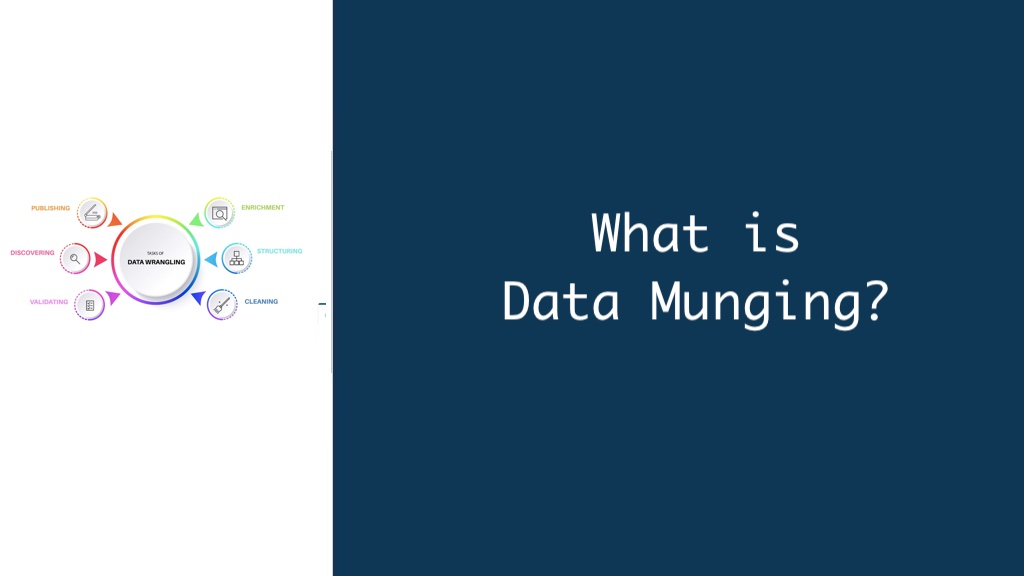In the ever-evolving world of data science, where raw information holds immense potential, data munging emerges as a crucial first step. Often used interchangeably with data wrangling, data munging refers to the process of transforming raw data into a clean and usable format for analysis. Imagine a sculptor meticulously shaping a block of rough stone into a masterpiece; data munging plays a similar role, transforming raw data into a well-structured foundation for valuable insights.
What is Data munging ?
Data munging is a process of transforming raw data into usable data. The first step is to organize and normalize the raw data. This makes the data processing easier, and it also removes invalid values, empty cells, and other errors. Sometimes, raw files contain large amounts of duplicate and corrupted data. These problems can be solved by cleaning and transforming the data.
Why is Data Munging Important?
Data, in its raw state, can be messy and inconsistent. It might contain errors, missing values, inconsistencies in formatting, or be scattered across various sources. This can significantly hinder the effectiveness of data analysis.
Data munging tackles these challenges
ensuring that the data you work with is:
- Clean: This involves identifying and correcting errors like typos, outliers, or invalid entries. Techniques like data validation and cleaning algorithms can be employed to rectify these issues.
- Consistent: Data munging ensures consistency in formatting, units of measurement, and data types across the entire dataset. This allows for seamless analysis and avoids misinterpretations.
- Complete: Missing values can be a major roadblock. Data munging involves identifying and addressing missing data points through techniques like imputation (filling in missing values with estimations) or data deletion (removing rows or columns with excessive missing values).
- Structured: The raw data might be scattered across different files or have an unclear structure. Data munging organizes the data into a well-defined format, often using tables or databases, for efficient analysis.
By transforming raw data into a clean and structured format
data munging paves the way for:
- Accurate Analysis: Clean data leads to more reliable and trustworthy results from your data analysis. This ensures that your conclusions are based on a solid foundation.
- Efficient Modeling: Machine learning models and other data analysis techniques often require structured and consistent data for optimal performance. Data munging prepares the data for these models, leading to more accurate predictions and insights.
- Improved Decision-Making: When data is clean and readily interpretable, it empowers data scientists and business stakeholders to make informed decisions based on reliable evidence.
- Streamlined Feature Engineering: Many machine learning algorithms require specific data formats for features. Data munging helps prepare the data for these algorithms, ensuring they can function optimally.
- Clearer Communication: When data is presented consistently and understandably, it fosters better communication between data scientists, analysts, and stakeholders. This collaborative environment is essential for deriving valuable insights from the data.
Tools : How is Data Munging Done?
Data munging can be accomplished using various techniques and tools. Here’s a glimpse into some commonly used methods:
- Programming Languages: Python, R, and Scala are popular choices for data munging tasks. These languages offer powerful libraries like Pandas (Python) and dplyr (R) that streamline data manipulation and cleaning processes.
- Spreadsheets: While not ideal for large datasets, spreadsheets like Microsoft Excel can be used for basic data cleaning and organization tasks.
- Data Integration Tools: These software solutions help combine data from various sources into a unified format, addressing inconsistencies and streamlining the data munging process.
- Data Wrangling Tools: Dedicated data wrangling tools like OpenRefine and Trifacta offer user-friendly interfaces and automation capabilities for various data cleaning and transformation tasks.
- Open-Source Tools: Open-source tools like Apache Spark provide distributed processing capabilities to handle massive datasets efficiently.
- Cloud-Based Platforms: Cloud platforms like Google Cloud Platform’s BigQuery or Amazon Web Services’ Redshift offer managed data warehousing solutions with built-in data munging capabilities.
Advanced Data Munging Techniques
As your data science skills evolve, you might encounter more intricate data munging scenarios. Here are some advanced techniques to consider:
- Data Transformation: This involves modifying the data’s structure or content to suit the specific needs of the analysis. It can involve calculations, aggregations, or feature engineering (creating new features from existing data).
- Data Normalization: This ensures that all data points within a specific attribute are represented on a consistent scale, preventing biases introduced by different measurement units.
- Data Sampling: For massive datasets, analyzing the entire set might be impractical. Data sampling techniques allow you to extract a representative subset of the data for efficient analysis.
Conclusion: Data Munging
Data munging, though often overshadowed by the glamour of machine learning and data visualization, serves as the unsung hero of data science. By meticulously preparing the data for analysis, data munging ensures that the insights gleaned are accurate, reliable, and ultimately lead to informed decision-making. As you embark on your data science journey, remember that clean data is the cornerstone of valuable discoveries, and data munging is the essential skill that unlocks its true potential.
